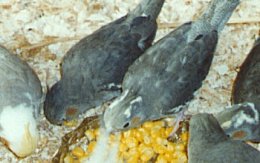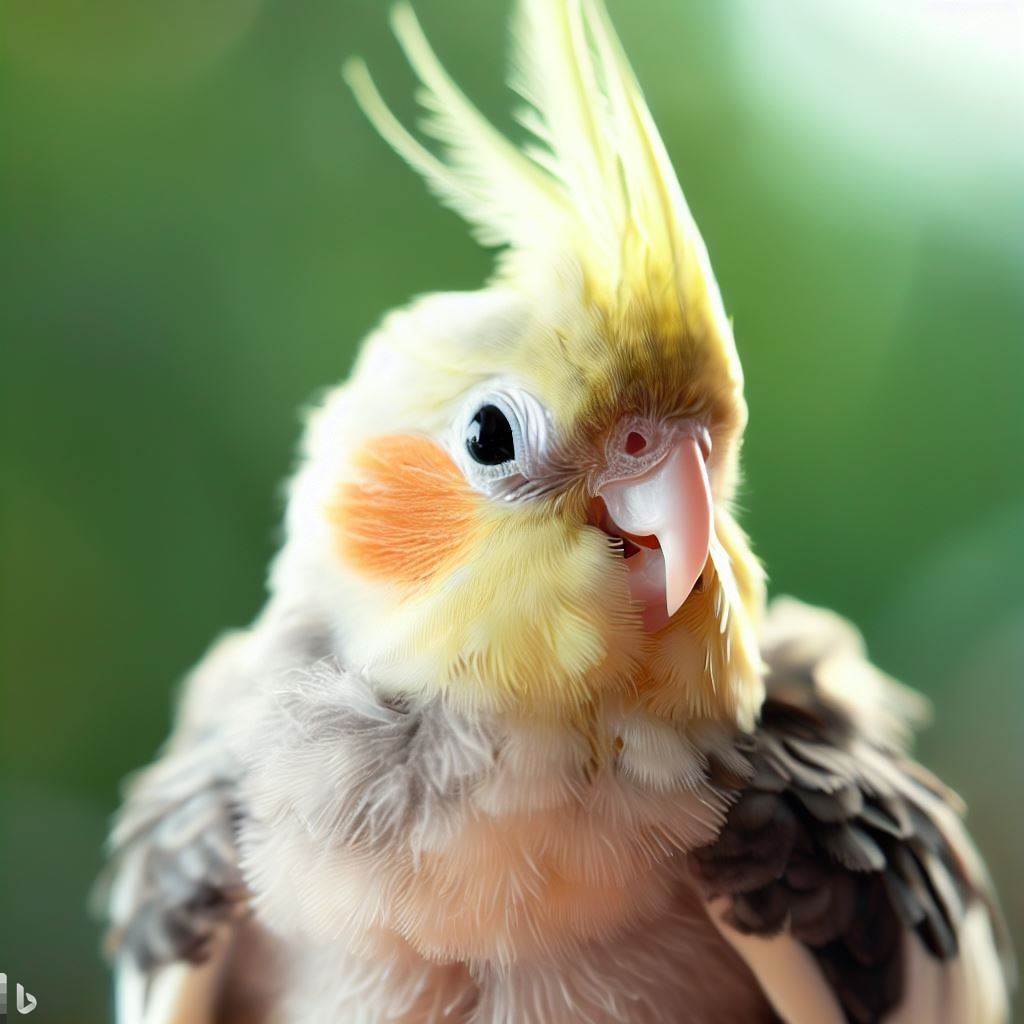
I generally start pre-weaning cockatiel babies when they first begin picking at their feathers, at each other or at items in the brooder (about 2 1/2-3 weeks of age). In fact, it’s almost right after I pull them that I notice this activity and start offering other foods. At that time I begin placing items like corn, peas, cooked brown rice, well cooked pasta, toasted whole wheat bread (no topping), Cheerios, Shredded Wheat, Total, cooked oatmeal, shredded mixed veggies, etc. in a small, low dish. I also start offering seeds and pellets in the form of Kaytee brand Vitamin & Mineral treat sticks. I know they’ll only pick at the food I offer for a week or two so expect a lot of waste during this time. Change the foods out often so they don’t spoil or become soiled. I generally remove fresh foods (anything other than seeds/pellets) after a few hours.
I know a lot of people offer items such as eggfoods or fresh hard boiled eggs to weaning baby birds. I rarely offer weaning cockatiels items which are too high in protein if they are still on formula. My reason for this is, if the protein content of a cockatiels diet is too high, it can cause growth problems, gout, or tends to make them more aggressive. This would all depend what percentage of the formula/diet is protein. If a cockatiel gets over 22% protein in the diet, it can cause these problems (Avian Medicine: Principles and Applications, 1994).
Some of you may choose not to offer your birds seeds at all. Beware, if you plan on selling any of the babies, it’s best to wean them onto pellets, fresh foods AND seeds. A lot of people you may feel will comply with your requests to continue feeding the same diet your baby has been on, may not when they check the prices of fresh food & pellets. If that’s the case and the baby wasn’t weaned onto seeds at all, the baby can starve to death because it doesn’t consider seeds as a food item. If I wean babies onto all possible types of foods a potential buyer may feed them, there’s less chance of problems with them not eating at the new home. Another example of this would be weaning a bird onto seeds and the new home refuses to feed them any seeds. Once again, they’ll starve since they don’t see pellets or fresh foods as something to eat. It’s better to offer all possible food choices to birds you don’t intend to keep.
By the time the babies are 6 weeks of age I’ve generally got them on 3 hand feedings a day (of around 12 cc’s per feeding). This is the time I begin what is generally referred to as “weaning” the babies. The most important thing is, watch their weight and don’t force any change they aren’t ready for (emotionally or physically).
When I feel the babies are ready to start the actual weaning process, (generally around 6-7 weeks of age) I cut out the middle meal. I take the weight at least twice a day (once in the morning when the crop is empty and again at night before the last feeding of the day) so I can observe even minor weight losses. If the baby has lost more than a gram or two by the evening feeding, I will make sure their tummy (crop) is full before bedtime and will give them about 6 cc’s for the middle feeding the next day. This will generally make the difference in the amount of weight lost and tells me they aren’t ready for the middle meal to be totally eliminated yet. I’ll try again in another day or two.
Most medical information I’ve found on weaning state baby birds may safely lose from 10 to 15 percent of the highest pre-weaning body weight. Personally, I feel more comfortable weaning them at a pace where there isn’t any weight loss of more than a gram or two.
After a baby can maintain the majority of it’s weight without the middle meal (for a few days to a week), I will try omitting the first meal of the day. You NEVER want to remove the nightly meal at this point because the baby needs to have food in it’s system during sleeping periods. It won’t be feeding while sleeping like it does during the day.
After the baby can maintain most of it’s weight without the morning and middle meals (a few days to a week), try removing the last meal of the day. If the baby starts losing more than a few grams from the weight of the previous morning, offer the baby half the amount it had been getting at night (about 1/2 hour before lights out so it still has time to eat some on it’s own).
When a baby can maintain the majority of it’s weight without any hand feeding for 7-10 days I consider it fully weaned.
Some babies seem to wean better if they are offered the mixed formula in a small dish during the entire weaning process. To get them to accept it this way, I usually make sure the babies have access to the dish when I’m drawing up the formula in the syringe. I then let them watch as I squirt it back into the dish while letting them taste it on the end of the syringe. After this, I’ll place my fingers in the dish and get the formula on them. Make sure your hands are totally clean before doing this! I then let the babies take the formula from my fingers and make sure they see where I’m getting it from. It generally only takes a few minutes for them to figure out they can get the formula from the dish much quicker than they can from my hand.
Due to possible bacterial growth, don’t leave the formula out in the dish more than 30 minutes and make sure it’s warm when you offer it.
If this method of weaning isn’t working for you, don’t give up. There’s a method out there which will work. If a baby takes longer than you feel it should to wean, or cries to be fed (when it’s crop is fairly full), please have it checked for a yeast infection or other possible bacterial, fungal or health problem. The crying IS NOT normal in a healthy baby which is properly fed. It’s also very unusual for a cockatiel to take longer than 10 weeks to wean. I’ve had them wean at 6 weeks (not the norm) but mine generally wean by 8 weeks of age.
That’s it! The birds get the chance to wean at their own rate, you haven’t had a nervous breakdown worrying about them, and it’s fun to play with them during the process. I hope you each can enjoy it as much as I do.

